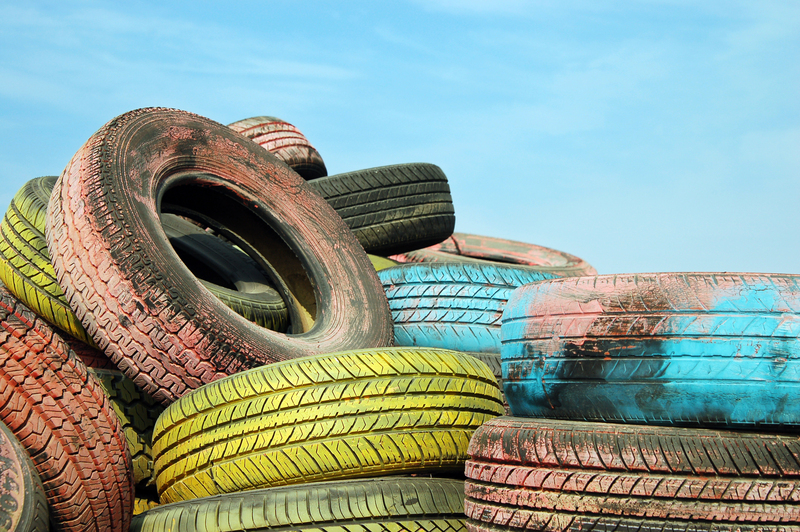Recycling Pots and Pans Responsibly: A Step-by-Step Guide
Recycling pots and pans responsibly is an essential aspect of modern sustainable living. With millions of households replacing cookware every year, it's crucial to understand how to dispose of old pots and pans in an eco-friendly manner. In this comprehensive guide, we'll explore the best practices, local regulations, recycling options, and creative ideas for extending the lifespan of your kitchenware. By the end, you'll know exactly how to recycle your pots and pans responsibly and help the planet at the same time.

Why Responsible Pots and Pans Recycling Matters
Did you know that most pots and pans are made from recyclable metals like aluminum, stainless steel, or copper? However, much of this cookware ends up in landfills due to a lack of awareness or convenient options for recycling. Improper disposal contributes to environmental pollution and squanders resources that could be reused to make new products.
- Reducing landfill waste: Recycling ensures less waste ends up in overfilled landfills.
- Conserving resources: Recycled metals require less energy to process than raw materials.
- Protecting the environment: Fewer pots and pans in the landfill lowers the risk of soil and water contamination.
Choosing to recycle your old pots and pans responsibly is a small step with a substantial environmental impact.
What Types of Cookware Can Be Recycled?
Before you start, it's important to know which types of household cookware can be recycled. Most pots and pans are made from valuable and recyclable materials, but some may have coatings or handles that need to be removed first.
Common Recyclable Materials in Cookware
- Stainless Steel: Highly recyclable and in demand for scrap metal.
- Aluminum: Lightweight and easy for recycling centers to process.
- Copper: Valued for its conductivity; often recovered and recycled.
- Cast Iron: Durable and simple to melt down for reuse.
Materials That May Require Special Handling
- Nonstick coatings, such as Teflon® or ceramic
- Bakelite or plastic handles
- Glass lids
- Enamel finishes
If your cookware contains non-metallic parts, consider separating them before recycling. Always check with your local recycling facility about material-specific requirements.
How to Prepare Pots and Pans for Recycling
Preparing your cookware correctly ensures it won't contaminate the recycling stream. Here's a simple checklist:
- Remove non-metal parts: Take off plastic, rubber, wooden, or glass components such as handles and lids.
- Clean thoroughly: Wash off food residue, grease, or burnt-on material.
- Sort by material: Separate stainless steel, aluminum, and cast iron pots and pans for easier processing.
- Double-check for hazardous coatings: Some nonstick coatings may need to be handled separately - consult your municipality for guidance.
By taking these steps, you're making it easier for recycling facilities to process your old pots and pans responsibly, increasing the chance that the material will be reused in future products.
Where to Recycle Pots and Pans Responsibly
1. Check Local Recycling Centers
The most straightforward option is to take your cookware to a local recycling center or scrap metal yard. Not all curbside recycling programs accept large metal items, so visit your municipality's website or contact your waste management provider to get details.
- Look for "scrap metal" on the accepted items list.
- Ask about separate bins for different metals if you have various types of cookware.
- Bring proof of residency if required, as some centers have restrictions.
2. Household Hazardous Waste Events
Some regions hold special collection days or events for hard-to-recycle items. Nonstick pans or those with unusual coatings may be accepted during these events, so keep an eye out for announcements from your local government.
3. Retail Take-Back Programs
Certain retailers and cookware brands have sustainability initiatives that allow you to return old pots and pans for recycling when you purchase new ones. Brands like GreenPan, Le Creuset, and Sur La Table sometimes offer in-store collection bins for your convenience.
4. Scrap Metal Dealers
If your cookware is primarily metal, local scrap metal dealers are a reliable recycling destination. Many will accept all types of metals and may even pay you for the material, based on weight and market prices.
- Check for minimum load or sorting requirements.
- Ask about nonstick or composite pans, as not all dealers accept them.
Creative Ways to Reuse and Repurpose Old Pots and Pans
If your pans are no longer safe for cooking but are structurally intact, consider upcycling them before recycling. Giving your old cookware a new life in your home or garden keeps them out of the waste stream for longer. Here are some imaginative ideas:
- Planters: Drill a few holes in the bottom for drainage, add soil, and use old pots as unique garden planters.
- Bird baths or feeders: Wide, shallow pans are perfect for attracting local birds.
- Wall art: Paint or decorate old frying pans to create colorful wall hangings for your kitchen or patio.
- Organizers: Use deep pots as storage bins for tools, toys, or craft supplies.
- Candle holders or lanterns: Cast iron skillets and small pans can be transformed into rustic candle bases.
Get creative - upcycling not only diverts waste from landfills but also adds a personalized touch to your space.
Donation: Give Old Cookware a Second Chance
If your pots and pans are still usable, but no longer fit your needs, don't rush to recycle. Many charitable organizations, shelters, and thrift stores welcome cookware donations, provided they are clean and functional.
Where to Donate Pots and Pans
- Local charity shops (Goodwill, Salvation Army, Habitat ReStores)
- Homeless and domestic violence shelters
- Community centers or churches running kitchen supply drives
- Online platforms like Freecycle, Facebook Marketplace, or Craigslist
Remember: Donation extends the life-cycle of your pots and pans and directly benefits those in need.
Special Considerations for Nonstick and Specialty Cookware
Nonstick pans, especially older ones containing PFOA or PTFE, require special care. Not all recycling centers or scrap dealers accept cookware with these coatings, as they can release hazardous fumes when melted.
- Contact manufacturer: Some brands offer mail-in take-back programs for nonstick pans.
- Drop off at hazardous waste facilities if recommended by your local municipality.
- Never incinerate nonstick cookware or dispose of it in open flames.
When in doubt, check both the cookware brand's website and your local recycling center for the safest disposal methods.
How Not to Recycle Pots and Pans
Understanding what not to do is just as important as knowing the best practices. Here are some common recycling errors to avoid:
- Throwing cookware in the regular garbage or curbside bin if not explicitly accepted
- Leaving nonstick, plastic, or wooden components attached
- Placing dirty or greasy pots in recycling, which might contaminate the stream
- Trying to recycle cookware with hazardous or unknown materials without guidance
Recycling pots and pans responsibly requires a little extra effort, but it's worth it to prevent waste and environmental harm.
Frequently Asked Questions about Pots and Pans Recycling
Can I put old pots and pans in my curbside recycling bin?
With rare exceptions, most curbside recycling programs do not accept cookware due to the size and mix of materials. Check with your local service, but usually scrap metal or dedicated recycling facilities are required.
Are Teflon pans recyclable?
Many recycling centers will not accept Teflon-coated pans due to concerns about fumes and contamination. Some manufacturers offer take-back programs. Consider donating if the pans are still usable; otherwise, dispose of them at a hazardous waste facility if possible.
Can I recycle cookware with plastic handles?
Remove plastic handles and lids before recycling. The metal portion can usually be processed, but plastics may need to be handled separately.
What are alternatives if recycling isn't available in my area?
If local recycling is limited, look for national mail-back programs, charitable donations, or consider upcycling for home or garden use.

Conclusion: Make a Difference by Recycling Pots and Pans Responsibly
The journey towards a more sustainable kitchen starts with responsible recycling of pots and pans. Whether you choose to recycle, donate, or creatively repurpose your old cookware, each action - no matter how small - contributes to a healthier environment.
With a little extra care and awareness, your old pots and pans can avoid the landfill and find new life as materials for future generations. Start today, and help make recycling a cornerstone of your sustainable lifestyle!
- Separate materials and clean cookware before recycling.
- Check local guidelines for specific disposal or recycling requirements.
- Research creative alternatives to landfilling, like donation or upcycling.
- Spread the word and encourage friends and family to recycle pots and pans responsibly!
Additional Resources for Pots and Pans Recycling
- Earth911 Recycling Locator: https://search.earth911.com/
- EPA Sustainable Materials Management: https://www.epa.gov/smm
- Contact your city's sanitation department or local recycling center for area-specific details.